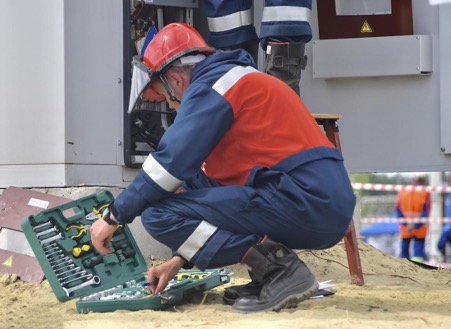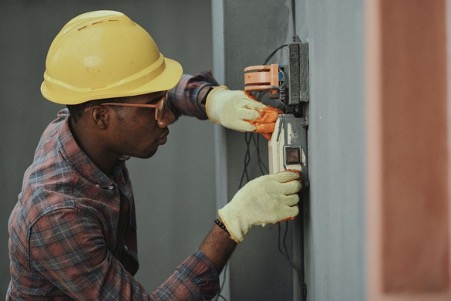Preventive and corrective maintenance are two essential elements of an effective maintenance program for any facility or business, but it is important to understand the difference between them. Preventive maintenance is all about anticipating potential problems before they arise and taking proactive steps to stop them from happening, while corrective maintenance is used to fix existing issues after they have already occurred. Understanding this distinction can help managers create more efficient operations that reduce downtime and increase productivity. In this blog post, we will explain the differences between preventive and corrective maintenance in greater detail, so you can choose which option best fits your needs.

- 1 Understanding Preventive Maintenance and its Benefits
- 2 Identifying Reasons for Corrective Maintenance
- 3 Differences between these two Types of Maintenance
- 4 Examples of Preventive Maintenance for Homeowners
- 5 How to Create an Effective Corrective Maintenance Plan
- 6 Pros and Cons of Having Both Preventive and Corrective Maintenance Strategies
Understanding Preventive Maintenance and its Benefits
Preventive maintenance is an essential aspect of any successful business. Performing regular upkeep on equipment, vehicles, or facilities before a problem occurs, can save organizations valuable time and money in the long run. Not only does preventive maintenance help to extend the lifespan of equipment, but it can also prevent safety hazards and reduce the likelihood of unexpected downtime. However, understanding what preventive maintenance entails and how to implement a preventive maintenance program can be overwhelming. Don’t worry. With the right knowledge and tools, preventive maintenance can be easily integrated into any organization, and the benefits will be quickly realized. Whether you’re in need of school maintenance parts or another type of service, preventive maintenance can help. It is important to note that preventive maintenance may include regular inspections, checking fluid levels, and making repairs before they become major problems.
Identifying Reasons for Corrective Maintenance
Corrective maintenance is a crucial aspect of ensuring the smooth functioning of any industrial equipment or machinery. Whether it’s a faulty engine, broken conveyor belt, or leaking pipe, identifying the root cause of the issue is the first step toward effective corrective maintenance. These reasons could range from wear and tear of components to improper maintenance practices, and they must be addressed promptly to avoid downtime and potential safety hazards. By identifying the underlying reasons for corrective maintenance, engineers and maintenance personnel can not only fix the current problem but also take preventive measures to avoid similar issues in the future. Therefore, it is vital to conduct regular inspections and implement a robust corrective maintenance program to ensure the longevity and efficiency of equipment and machinery.
Differences between these two Types of Maintenance
Maintenance is an essential factor in ensuring the longevity and optimal performance of any machinery or equipment. There are two types of maintenance- corrective and preventive. Corrective maintenance is done after the equipment has failed or experienced a breakdown, and preventive is the regular maintenance done to avoid any breakdowns or failures. The main difference between the two is that corrective maintenance is reactive, while preventive maintenance is proactive. While corrective maintenance is a short-term fix, preventive maintenance is a long-term solution that reduces downtime and improves equipment reliability. Understanding the differences between the two maintenance types can help organizations make informed decisions on what type of maintenance to prioritize for their equipment.
Examples of Preventive Maintenance for Homeowners
As a homeowner, it’s important to take care of your property in order to prevent future damages and costly repairs. One way to do this is by implementing preventive maintenance measures. These can include regular inspections of your home’s electrical system, HVAC system, and plumbing. It’s also important to maintain your home’s exterior by cleaning gutters, trimming trees and bushes, and keeping the roof in good condition. In addition, regular pest control treatments can help prevent infestations and damage to your home. By taking these preventive steps, you can save yourself both time and money in the long run.
How to Create an Effective Corrective Maintenance Plan
In order to ensure the smooth operation of any machinery or equipment, it is important to have a corrective maintenance plan in place. Creating an effective plan is not an easy task, but it plays a crucial role in avoiding unexpected downtimes and unnecessary expenses. The first step is to identify the critical assets that need maintenance, followed by determining the type of maintenance required. It is important to prioritize maintenance tasks based on their criticality and frequency of use. Outlining the roles and responsibilities of each team member involved in the maintenance process is equally important. Additionally, setting realistic timelines and having a system in place for tracking progress and reporting issues go a long way in ensuring the success of the corrective maintenance plan. By following these guidelines, a well-executed and effective plan can be created.
Pros and Cons of Having Both Preventive and Corrective Maintenance Strategies
Maintaining any type of machinery or equipment is crucial for its optimal functioning and longevity. Two common approaches to maintenance are preventive and corrective maintenance strategies. Preventive maintenance aims to minimize the likelihood of equipment failure by performing regular inspections, cleaning, and lubrication. Corrective maintenance, on the other hand, involves repairing or replacing equipment after it has already failed. While having both strategies in place can be beneficial, there are also some drawbacks to consider.
One pro of preventive maintenance is that it can save the company money in the long run by reducing downtime and repair costs. However, this approach can also be time-consuming and costly upfront. Corrective maintenance may be quicker and cheaper initially, but relying on this strategy means the company is risking equipment failure and potentially larger repair costs down the line. Ultimately, it is important to weigh the pros and cons of each approach and determine the best maintenance plan for the specific equipment and company needs.

In conclusion, preventive and corrective maintenance both play important roles in keeping a home safe and functioning properly. Understanding the differences between these two types of maintenance can help homeowners make better decisions on how to protect their investments. Preventive maintenance ensures that potential problems are caught and repaired early, which can save time, money, and resources. Corrective maintenance can be effective when used after an issue has been identified, allowing for repairs to be completed swiftly and efficiently. Utilizing both preventive and corrective maintenance strategies can give homeowners peace of mind that their homes remain safe and reliable for years to come. Ultimately, determining the best combination of maintenance techniques depends on individual needs and preferences, but planning ahead with a proactive approach is beneficial for any homeowner looking to maintain the value of their property.





